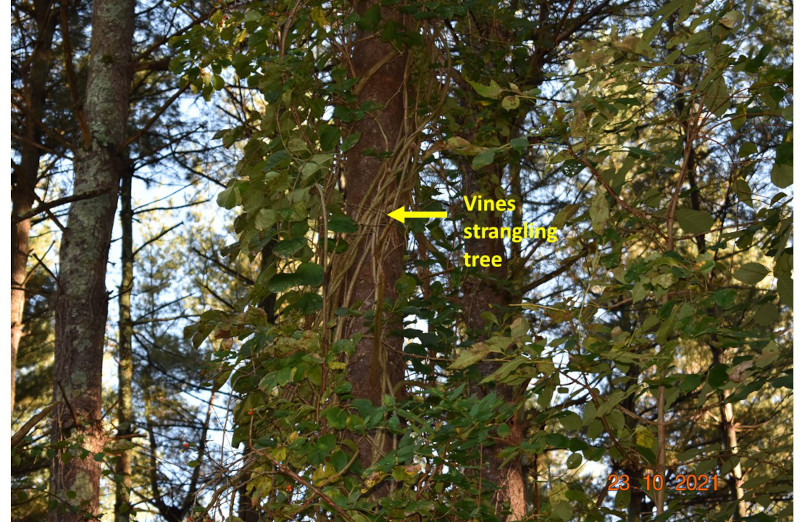Oriental bittersweet has been around awhile in the United States, having been introduced in the 1860s for the purpose of making floral arrangements such as wreaths. Oriental bittersweet produces a yellowish-green flower from May to June. Believe it or not, this plant is still available for purchase at on-line nurseries. The berries are difficult to digest allowing Oriental bittersweet to rapidly spread, outcompeting natural vegetation and disrupting habitats. This aggressive vine is now naturalized in 21 states extending from Maine to Georgia, and west to Iowa.
Oriental bittersweet can grow in a variety of conditions but sunlight is the most vital resource for Oriental bittersweet, growing more rapidly in environments having more light. This is one reason we see Oriental bittersweet growing along Liberty Reservoir trails. The downed trees allow more sunlight to penetrate the canopy, encouraging more Oriental Bittersweet to grow. Seedlings, however, can grow in shaded areas in all types of soil. Its ability to grow in a variety of environments allows this vine to outcompete other species like American bittersweet. The two vines, Oriental and American bittersweet, look very similar except the later has orange berries; Oriental bittersweet has yellow berries that split to reveal a bright red center. American bittersweet is now rarely found having been outcompeted by Oriental bittersweet.
Oriental bittersweet can be commonly found in gardens and flower beds. Birds and other berry-eating animals spread the seeds over large areas making it difficult, but not impossible, to control. Fall provides an opportunity to identify and destroy Oriental bittersweet. Seedlings can be pulled out with some difficulty; roots have a distinctive red-orange color. Larger vines, which can have a diameter of several inches, can be cut with a reciprocating saw to kill the vine. It is recommended that the vine be cut at two locations: once at eye level, and the second cut should be made closer to the ground. Note that once the vine is severed small seedlings will grow from parts of the vine still in the ground. Seedlings are very hardy and can grow in a variety of environments. You will need to pull out the seedlings to prevent the vine from becoming reestablished.
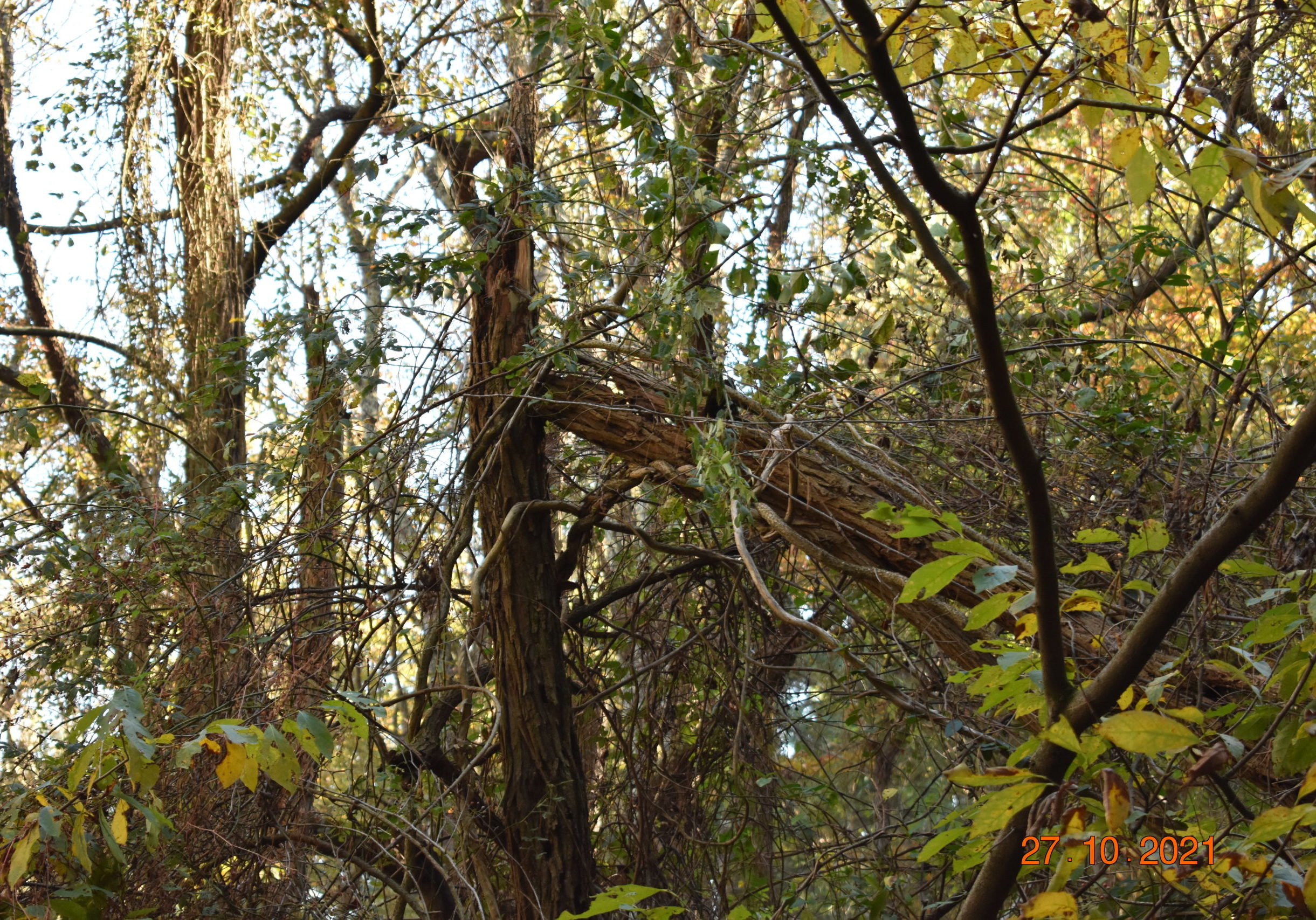
Oriental Bittersweet vines weighing down a tree branch along the Yellow Trail. Liberty Reservoir is filled with trees brought down by this vine.
(Photo by Phil Canter)
You will want to remove Oriental Bittersweet as soon as possible; otherwise, it will suffocate plants in your flower and vegetable gardens. This vine has a distinctive reddish-orange root making it easy to identify. Try not to cut the vine if it has berries to prevent the fruit from spreading; you will need to cut the vine when it is no longer producing berries. I noticed during some of our trash-pickups that some Oriental Bittersweet vines were severed, thereby ameliorating their impact on other areas of the Reservoir. It is not clear whether this was done by DPW or by private citizens concerned about the vines’ impact on Reservoir vegetation, but Oriental Bittersweet is prolific along de-commissioned trails due to lack of attention. As trees fall from the vine’s weight more sunlight will infiltrate the Reservoir’s understory, promoting the growth of more vines and Japanese Stiltgrass.
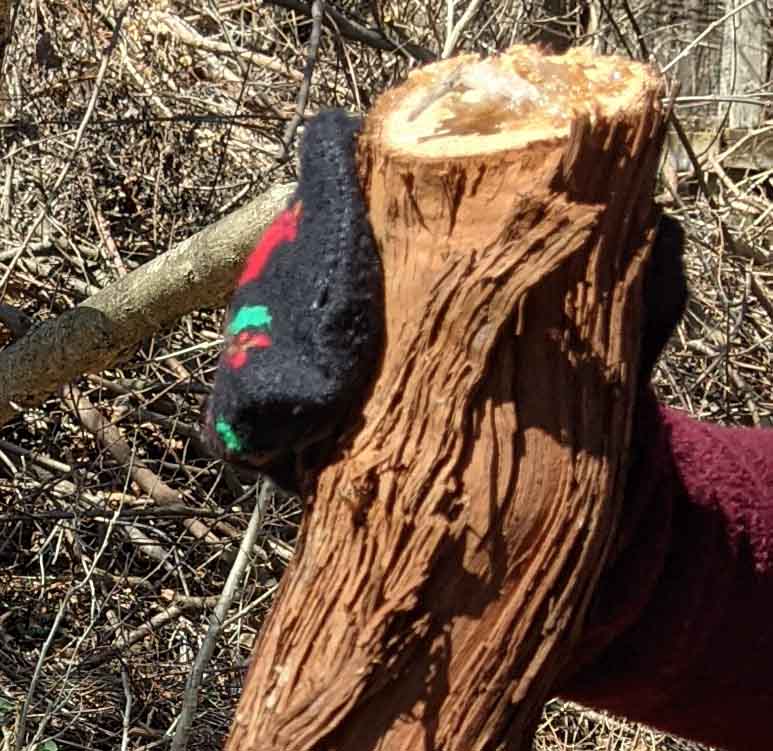
Oriental Bittersweet vine cut from a tree. This small part of the vine weighed a little over one pound. The woody vine is easy to identify and can be removed by severing the vine. Once the vine is cut it will produce seedlings that will need to be removed.
Photo by Phil Canter.
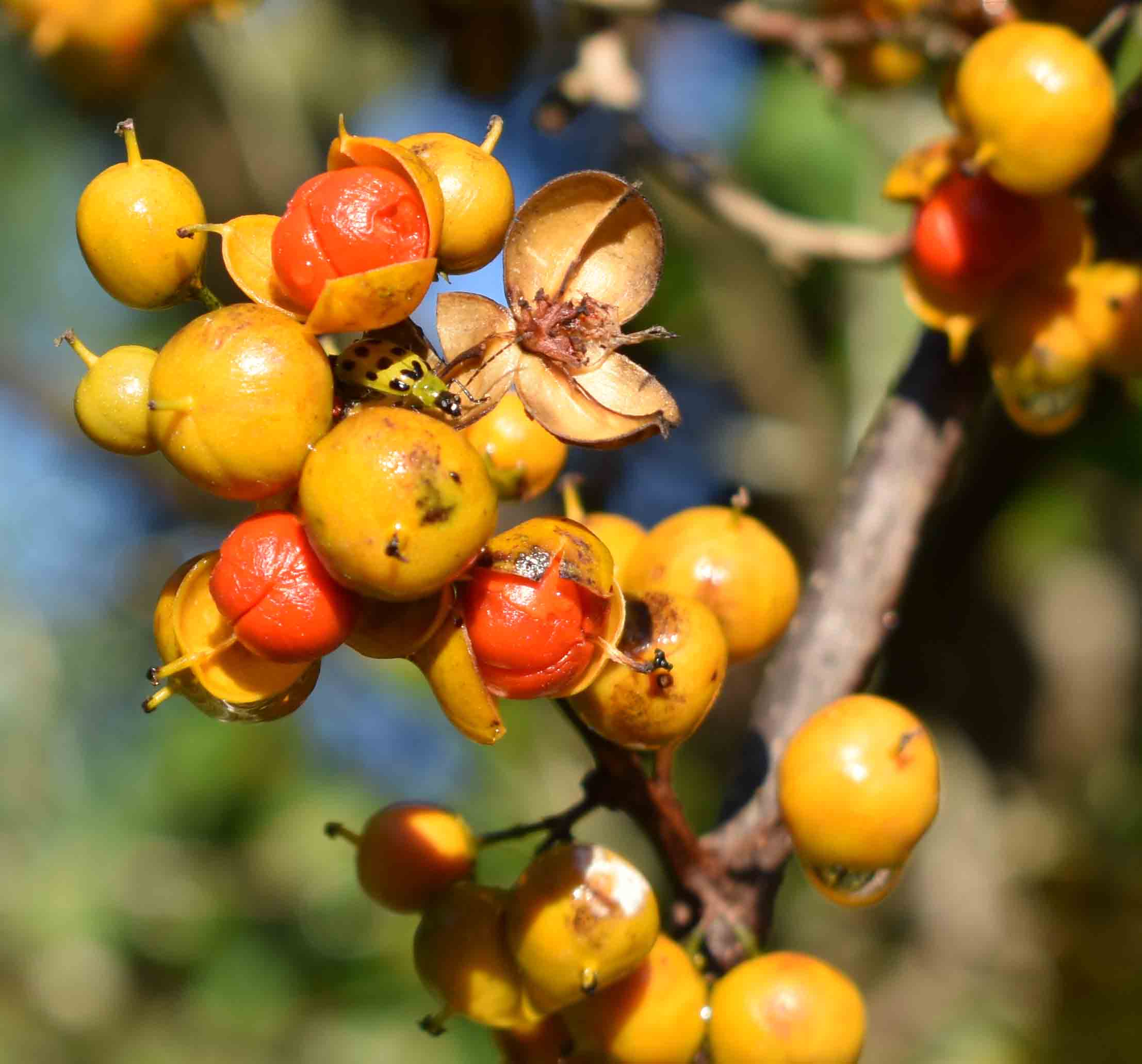
Oriental Bittersweet berries can not be digested by berry eating animals so they are easily spread over large areas once a vine becomes established.
Photo by Phil Canter.

Oriental Bittersweet seedling growing in a flower bed. This seedling is only a few weeks old.
Photo by Phil Canter.
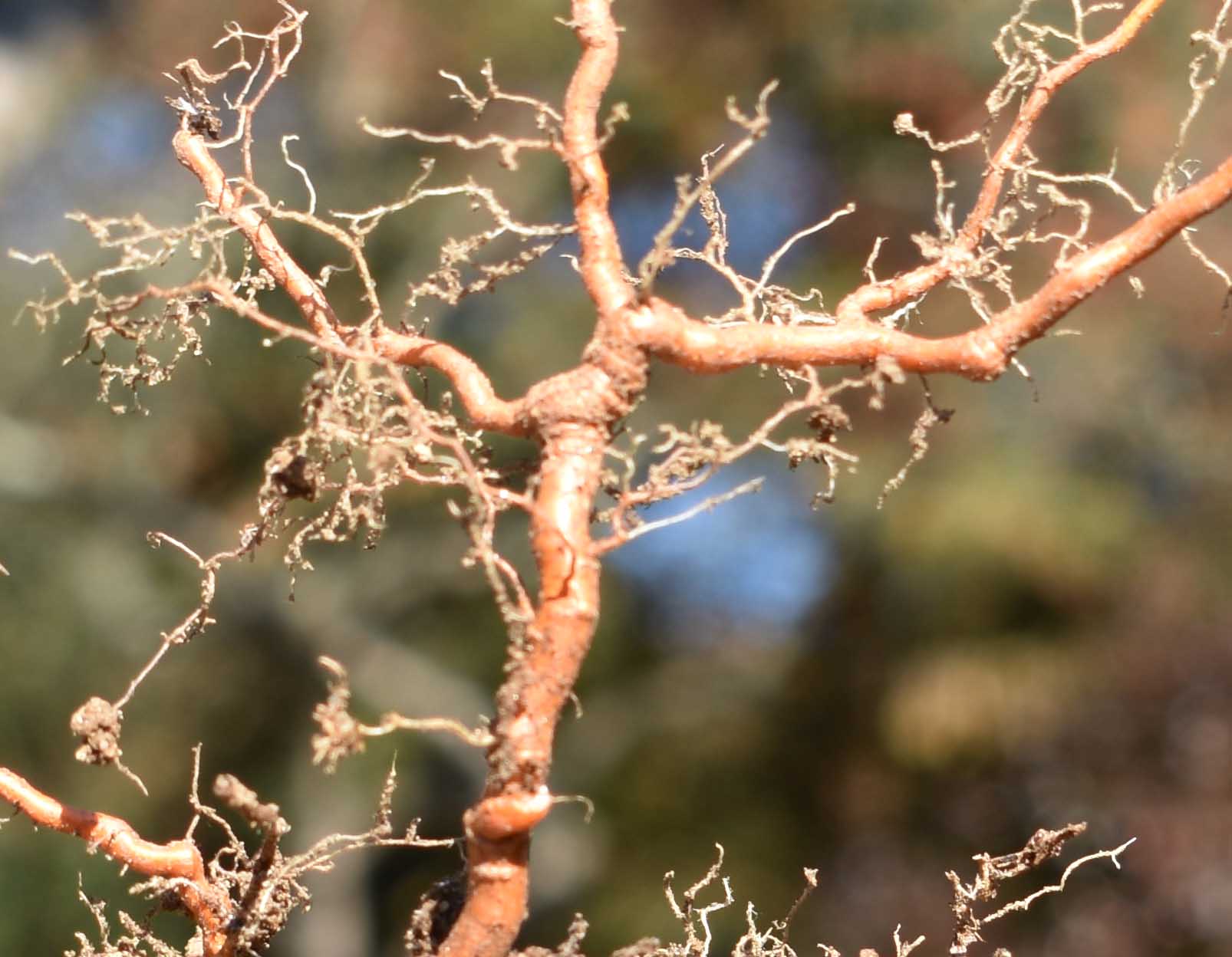
Oriental Bittersweet has reddish-orange roots with a dendritic growth pattern. The root pattern allows Oriental Bittersweet seedlings to spread over a wide area. This seedling was approximately 1 foot high.
Photo by Phil Canter.
Sources
https://woodyinvasives.org/woody-invasive-species/oriental-bittersweet/
https://www.invasivespeciesinfo.gov/terrestrial/plants/oriental-bittersweet
https://en.wikipedia.org/wiki/Celastrus_orbiculatus
https://extension.psu.edu/oriental-bittersweet

